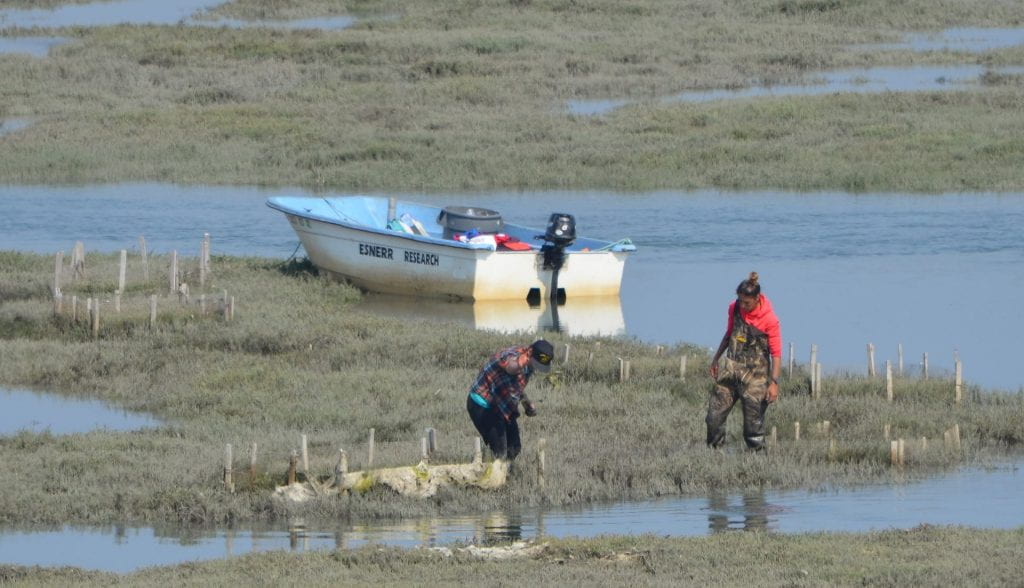
Kathryn (Kat) Morgan Beheshti
PhD, University of California, Santa Cruz
Visit Kat’s Personal Webpage.
For my graduate research at UCSC I will be focusing on plant-invertebrate interactions within the tidal marshes and eelgrass beds of Elkhorn Slough. My first chapter will focus on the interaction between both biotic and abiotic components driving marsh loss via salt panne expansion. Salt pannes are mud depression devoid of vegetation due to the edaphic conditions that result from waterlogged sediment, mainly anoxia and sulfide toxicity. This system is dominated by the perennial halophyte Sarcoccornia pacifica, pickleweed.

I will be studying the interaction between S. pacifica and native graspid crab species Pachygrapsus crassipes at varying elevations as a proxy for sea level rise. These crabs may, exert strong top-down pressure through herbivory and burrowing, as has been shown in other systems. I will explore interactions between crab effects and SLR on marsh sustainability in this system, which serves as a model for future drowning marshes in the region.
Marshes that fail to accrete sufficient sediment to track SLR convert to intertidal mudflats. At Elkhorn Slough this conversion occurs primarily through expansion of salt pannes, which often have high densities of crab burrows on their expanding edges. I will explore whether mud pannes vs. marshes represent alternate stable states, with feedbacks between crab burrowing and increased inundation time resulting in hysteresis. Hysteresis is a theory of alternative stable states whereby the resilience of a system is compromised due to the required backward-shift to below threshold levels of the environmental parameter (crab abundance) found at the initial stable state (panne retention without expansion).

